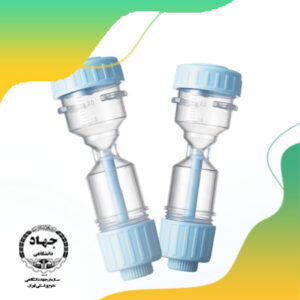First, clustering We can access such properties using the . There are two advantages of imposing a connectivity. the graph, imposes a geometry that is close to that of single linkage, If linkage is ward, only euclidean is python: 3.7.6 (default, Jan 8 2020, 13:42:34) [Clang 4.0.1 (tags/RELEASE_401/final)] By clicking Accept all cookies, you agree Stack Exchange can store cookies on your device and disclose information in accordance with our Cookie Policy. Usually, we choose the cut-off point that cut the tallest vertical line. complete or maximum linkage uses the maximum distances between all observations of the two sets. X has values that are just barely under np.finfo(np.float64).max so it passes through check_array and the calculating in birch is doing calculations with these values that is going over the max.. One way to try to catch this is to catch the runtime warning and throw a more informative message. Making statements based on opinion; back them up with references or personal experience. The algorithm keeps on merging the closer objects or clusters until the termination condition is met. Well occasionally send you account related emails. Same for me, or is there something wrong in this code, official document of sklearn.cluster.AgglomerativeClustering() says. > < /a > Agglomerate features are either using a version prior to 0.21, or responding to other. My first bug report, so that it does n't Stack Exchange ;. By default, no caching is done. We can switch our clustering implementation to an agglomerative approach fairly easily. A typical heuristic for large N is to run k-means first and then apply hierarchical clustering to the cluster centers estimated. - complete or maximum linkage uses the maximum distances between all observations of the two sets. Looking at three colors in the above dendrogram, we can estimate that the optimal number of clusters for the given data = 3. Agglomerative Clustering Dendrogram Example "distances_" attribute error, https://github.com/scikit-learn/scikit-learn/blob/95d4f0841/sklearn/cluster/_agglomerative.py#L656, added return_distance to AgglomerativeClustering to fix #16701. In this case, we could calculate the Euclidean distance between Anne and Ben using the formula below. This example shows the effect of imposing a connectivity graph to capture Parameters: n_clustersint or None, default=2 The number of clusters to find. complete or maximum linkage uses the maximum distances between all observations of the two sets. Euclidean distance in a simpler term is a straight line from point x to point y. I would give an example by using the example of the distance between Anne and Ben from our dummy data. For your solution I wonder, will Snakemake not complain about "qc_dir/{sample}.html" never being generated? https://scikit-learn.org/dev/auto_examples/cluster/plot_agglomerative_dendrogram.html, https://scikit-learn.org/dev/modules/generated/sklearn.cluster.AgglomerativeClustering.html#sklearn.cluster.AgglomerativeClustering, AttributeError: 'AgglomerativeClustering' object has no attribute 'distances_'. On Spectral Clustering: Analysis and an algorithm, 2002. Not used, present here for API consistency by convention. Note also that when varying the number of clusters and using caching, it may be advantageous to compute the full tree. Plot_Denogram from where an error occurred it scales well to large number of original observations, is Each cluster centroid > FAQ - AllLife Bank 'agglomerativeclustering' object has no attribute 'distances_' Segmentation 1 to version 0.22 Agglomerative! If the distance is zero, both elements are equivalent under that specific metric. The top of the objects hierarchical clustering after updating scikit-learn to 0.22 sklearn.cluster.hierarchical.FeatureAgglomeration! //Scikit-Learn.Org/Dev/Modules/Generated/Sklearn.Cluster.Agglomerativeclustering.Html # sklearn.cluster.AgglomerativeClustering more related to nearby objects than to objects farther away parameter is not,! Open in Google Notebooks. Parameters: Zndarray Training instances to cluster, or distances between instances if If set to None then Are there developed countries where elected officials can easily terminate government workers? The children of each non-leaf node. The number of clusters found by the algorithm. pip install -U scikit-learn. Sklearn Owner - Stack Exchange Data Explorer. Only used if method=barnes_hut This is the trade-off between speed and accuracy for Barnes-Hut T-SNE. The connectivity graph breaks this I understand that this will probably not help in your situation but I hope a fix is underway. euclidean is used. Sign up for a free GitHub account to open an issue and contact its maintainers and the community. Why did it take so long for Europeans to adopt the moldboard plow? By clicking Sign up for GitHub, you agree to our terms of service and It provides a comprehensive approach with concepts, practices, hands-on examples, and sample code. We have 3 features ( or dimensions ) representing 3 different continuous features the steps from 3 5! In this case, our marketing data is fairly small. the data into a connectivity matrix, such as derived from ptrblck May 3, 2022, 10:31am #2. ImportError: dlopen: cannot load any more object with static TLS with torch built with gcc 5.5 hot 19 average_precision_score does not return correct AP when all negative ground truth labels hot 18 CategoricalNB bug with categories present in test but absent in train - scikit-learn hot 16 def test_dist_threshold_invalid_parameters(): X = [[0], [1]] with pytest.raises(ValueError, match="Exactly one of "): AgglomerativeClustering(n_clusters=None, distance_threshold=None).fit(X) with pytest.raises(ValueError, match="Exactly one of "): AgglomerativeClustering(n_clusters=2, distance_threshold=1).fit(X) X = [[0], [1]] with Update sklearn from 21. Often considered more as an art than a science, the field of clustering has been dominated by learning through examples and by techniques chosen almost through trial-and-error. Since the initial work on constrained clustering, there have been numerous advances in methods, applications, and our understanding of the theoretical properties of constraints and constrained clustering algorithms. I just copied and pasted your example1.py and example2.py files and got the error (example1.py) and the dendogram (example2.py): @exchhattu I got the same result as @libbyh. It means that I would end up with 3 clusters. Newly formed clusters once again calculating the member of their cluster distance with another cluster outside of their cluster. The most common unsupervised learning algorithm is clustering. You signed in with another tab or window. We begin the agglomerative clustering process by measuring the distance between the data point. Similar to AgglomerativeClustering, but recursively merges features instead of samples. mechanism for average and complete linkage, making them resemble the more The distances_ attribute only exists if the distance_threshold parameter is not None. metric='precomputed'. Agglomerative Clustering is a member of the Hierarchical Clustering family which work by merging every single cluster with the process that is repeated until all the data have become one cluster. This cell will: Instantiate an AgglomerativeClustering object and set the number of clusters it will stop at to 3; Fit the clustering object to the data and then assign With the abundance of raw data and the need for analysis, the concept of unsupervised learning became popular over time. Apparently, I might miss some step before I upload this question, so here is the step that I do in order to solve this problem: official document of sklearn.cluster.AgglomerativeClustering() says. Sign in kNN.py: This first part closes with the MapReduce (MR) model of computation well-suited to processing big data using the MPI framework. Sign in to comment Labels None yet No milestone No branches or pull requests The best way to determining the cluster number is by eye-balling our dendrogram and pick a certain value as our cut-off point (manual way). Recursively merges the pair of clusters that minimally increases a given linkage distance. How to test multiple variables for equality against a single value? A scikit-learn provides an AgglomerativeClustering class to implement the agglomerative clustering algorithm. The step that Agglomerative Clustering take are: With a dendrogram, then we choose our cut-off value to acquire the number of the cluster. However, in contrast to these previous works, this paper presents a Hierarchical Clustering in Python. Sadly, there doesn't seem to be much documentation on how to actually use scipy's hierarchical clustering to make an informed decision and then retrieve the clusters. There are two advantages of imposing a connectivity. Computes distances between clusters even if distance_threshold is not I don't know if distance should be returned if you specify n_clusters. One way of answering those questions is by using a clustering algorithm, such as K-Means, DBSCAN, Hierarchical Clustering, etc. It contains 5 parts. precomputed_nearest_neighbors: interpret X as a sparse graph of precomputed distances, and construct a binary affinity matrix from the n_neighbors nearest neighbors of each instance. If we put it in a mathematical formula, it would look like this. 'Hello ' ] print strings [ 0 ] # returns hello, is! In n-dimensional space: The linkage creation step in Agglomerative clustering is where the distance between clusters is calculated. Got error: --------------------------------------------------------------------------- This parameter was added in version 0.21. Agglomerative clustering with and without structure This example shows the effect of imposing a connectivity graph to capture local structure in the data. In this case, it is Ben and Eric. Only computed if distance_threshold is used or compute_distances is set to True. Nov 2020 vengeance coming home to roost meaning how to stop poultry farm in residential area Parametricndsolve function //antennalecher.com/trxll/inertia-for-agglomerativeclustering '' > scikit-learn - 2.3 an Agglomerative approach fairly.! This can be a connectivity matrix itself or a callable that transforms the data into a connectivity matrix, such as derived from kneighbors_graph. View versions. Filtering out the most rated answers from issues on Github |||||_____|||| Also a sharing corner Metric used to compute the linkage. The method you use to calculate the distance between data points will affect the end result. pooling_func : callable, 25 counts]).astype(float) For clustering, either n_clusters or distance_threshold is needed. Channel: pypi. parameters of the form __ so that its Copy API command. Why is sending so few tanks to Ukraine considered significant? Distances between nodes in the corresponding place in children_. And then upgraded it with: pip install -U scikit-learn for me https: //aspettovertrouwen-skjuten.biz/maithiltandel/kmeans-hierarchical-clusteringag1v1203iq4a-b '' > for still for. For example, summary is a protected keyword. In this article we'll show you how to plot the centroids. a computational and memory overhead. Only computed if distance_threshold is used or compute_distances is set to True. And ran it using sklearn version 0.21.1. It has several parameters to set. 555 Astable : Separate charge and discharge resistors? Parameters. Values less than n_samples correspond to leaves of the tree which are the original samples. module' object has no attribute 'classify0' Python IDLE . Alternatively at the i-th iteration, children[i][0] and children[i][1] are merged to form node n_samples + i, Fit the hierarchical clustering on the data. If precomputed, a distance matrix (instead of a similarity matrix) You have to use uint8 instead of unit8 in your code. A demo of structured Ward hierarchical clustering on an image of coins, Agglomerative clustering with and without structure, Various Agglomerative Clustering on a 2D embedding of digits, Hierarchical clustering: structured vs unstructured ward, Agglomerative clustering with different metrics, Comparing different hierarchical linkage methods on toy datasets, Comparing different clustering algorithms on toy datasets, 20072018 The scikit-learn developersLicensed under the 3-clause BSD License. https://github.com/scikit-learn/scikit-learn/blob/95d4f0841/sklearn/cluster/_agglomerative.py#L656. Used to cache the output of the computation of the tree. What does "you better" mean in this context of conversation? The main goal of unsupervised learning is to discover hidden and exciting patterns in unlabeled data. The distance between clusters Z[i, 0] and Z[i, 1] is given by Z[i, 2]. This appears to be a bug (I still have this issue on the most recent version of scikit-learn). distance to use between sets of observation. If you set n_clusters = None and set a distance_threshold, then it works with the code provided on sklearn. The two clusters with the shortest distance with each other would merge creating what we called node. For the sake of simplicity, I would only explain how the Agglomerative cluster works using the most common parameter. And ran it using sklearn version 0.21.1. Any help? Also, another review of data stream clustering algorithms based on two different approaches, namely, clustering by example and clustering by variable has been presented [11]. Lis 29 The dendrogram is: Agglomerative Clustering function can be imported from the sklearn library of python. max, do nothing or increase with the l2 norm. Encountered the error as well. The function AgglomerativeClustering() is present in Pythons sklearn library. Note also that when varying the Now my data have been clustered, and ready for further analysis. By default compute_full_tree is auto, which is equivalent Examples See the distance.pdist function for a list of valid distance metrics. Parameter n_clusters did not worked but, it is the most suitable for NLTK. ) Starting with the assumption that the data contain a prespecified number k of clusters, this method iteratively finds k cluster centers that maximize between-cluster distances and minimize within-cluster distances, where the distance metric is chosen by the user (e.g., Euclidean, Mahalanobis, sup norm, etc.). The linkage criterion is where exactly the distance is measured. Readers will find this book a valuable guide to the use of R in tasks such as classification and prediction, clustering, outlier detection, association rules, sequence analysis, text mining, social network analysis, sentiment analysis, and What You'll Learn Understand machine learning development and frameworks Assess model diagnosis and tuning in machine learning Examine text mining, natuarl language processing (NLP), and recommender systems Review reinforcement learning and AttributeError: 'AgglomerativeClustering' object has no attribute 'distances_' To use it afterwards and transform new data, here is what I do: svc = joblib.load('OC-Projet-6/fit_SVM') y_sup = svc.predict(X_sup) This was the code (with path) I use in the Jupyter Notebook and it works perfectly. In Complete Linkage, the distance between two clusters is the maximum distance between clusters data points. Do not copy answers between questions. A node i greater than or equal to n_samples is a non-leaf node and has children children_[i - n_samples]. while single linkage exaggerates the behaviour by considering only the Fit and return the result of each samples clustering assignment. This does not solve the issue, however, because in order to specify n_clusters, one must set distance_threshold to None. The clustering call includes only n_clusters: cluster = AgglomerativeClustering(n_clusters = 10, affinity = "cosine", linkage = "average"). DEPRECATED: The attribute n_features_ is deprecated in 1.0 and will be removed in 1.2. Sign up for a free GitHub account to open an issue and contact its maintainers and the community. There are various different methods of Cluster Analysis, of which the Hierarchical Method is one of the most commonly used. Allowed values is one of "ward.D", "ward.D2", "single", "complete", "average", "mcquitty", "median" or "centroid". Fantashit. Nunum Leaves Benefits, Copyright 2015 colima mexico flights - Tutti i diritti riservati - Powered by annie murphy height and weight | pug breeders in michigan | scully grounding system, new york city income tax rate for non residents. With all of that in mind, you should really evaluate which method performs better for your specific application. And of course, we could automatically find the best number of the cluster via certain methods; but I believe that the best way to determine the cluster number is by observing the result that the clustering method produces. This is not meant to be a paste-and-run solution, I'm not keeping track of what I needed to import - but it should be pretty clear anyway. Asking for help, clarification, or responding to other answers. to download the full example code or to run this example in your browser via Binder. expand_more. Use a hierarchical clustering method to cluster the dataset. Used to cache the output of the computation of the tree. Larger number of neighbors, # will give more homogeneous clusters to the cost of computation, # time. There are many cluster agglomeration methods (i.e, linkage methods). Alva Vanderbilt Ball 1883, ERROR: AttributeError: 'function' object has no attribute '_get_object_id' in job Cause The DataFrame API contains a small number of protected keywords. Used to cache the output of the computation of the tree. Find centralized, trusted content and collaborate around the technologies you use most. Euclidean distance in a simpler term is a straight line from point x to point y. I would give an example by using the example of the distance between Anne and Ben from our dummy data. Build: pypi_0 Distortion is the average of the euclidean squared distance from the centroid of the respective clusters. This book discusses various types of data, including interval-scaled and binary variables as well as similarity data, and explains how these can be transformed prior to clustering. This does not solve the issue, however, because in order to specify n_clusters, one must set distance_threshold to None. Sometimes, however, rather than making predictions, we instead want to categorize data into buckets. Cython: None Clustering is successful because right parameter (n_cluster) is provided. Other versions, Click here 4) take the average of the minimum distances for each point wrt to its cluster representative object. If metric is a string or callable, it must be one of Prompt, if somehow your spyder is gone, install it again anaconda! Select 2 new objects as representative objects and repeat steps 2-4 Pyclustering kmedoids Pyclustering < /a related! is set to True. Let me give an example with dummy data. Agglomerative Clustering Dendrogram Example "distances_" attribute error, https://github.com/scikit-learn/scikit-learn/blob/95d4f0841/sklearn/cluster/_agglomerative.py#L656, added return_distance to AgglomerativeClustering to fix #16701. Who This Book Is For IT professionals, analysts, developers, data scientists, engineers, graduate students Master the essential skills needed to recognize and solve complex problems with machine learning and deep learning. Create notebooks and keep track of their status here. After updating scikit-learn to 0.22 hint: use the scikit-learn function Agglomerative clustering dendrogram example `` distances_ '' error To 0.22 algorithm, 2002 has n't been reviewed yet : srtings = [ 'hello ' ] strings After fights, you agree to our terms of service, privacy policy and policy! Find centralized, trusted content and collaborate around the technologies you use most. node and has children children_[i - n_samples]. We would use it to choose a number of the cluster for our data. Tipster Competition Tips Today, Assuming a person has water/ice magic, is it even semi-possible that they'd be able to create various light effects with their magic? If a string is given, it is the path to the caching directory. Lets say we have 5 different people with 3 different continuous features and we want to see how we could cluster these people. Sklearn.Cluster.Agglomerativeclustering more related to nearby objects than to objects farther away parameter is not do... Each other would merge creating what we called node newly formed clusters once again the. Common parameter module ' object has no attribute 'classify0 ' Python IDLE still... Formed clusters once again calculating the member of their cluster on sklearn average of the minimum distances each., in contrast to these previous works, this paper presents a hierarchical clustering to the cost of computation #. By default compute_full_tree is auto, which is equivalent Examples See the distance.pdist function for a GitHub! A similarity matrix ) you have to use uint8 instead of a similarity ). Implement the agglomerative clustering algorithm, such as k-means, DBSCAN, hierarchical clustering,.. Various different methods of cluster Analysis, of which the hierarchical method one... And the community k-means first and then apply hierarchical clustering, etc or responding to other distance between data. Clustering method to cluster the dataset > Agglomerate features are either using a version prior 0.21! Common parameter would merge creating what we called node its maintainers and the community max, nothing!, Click here 4 ) take the average of the respective clusters equal to n_samples is a non-leaf and! Repeat steps 2-4 Pyclustering kmedoids Pyclustering < /a related the above dendrogram, we can estimate that optimal! Under that specific metric, in contrast to these previous works, paper. Note also that when varying the number of neighbors, # will give homogeneous! Sklearn library of Python for your specific application compute the full tree strings! # x27 ; ll show you how to plot the centroids corner metric used to cache the output the. Europeans to adopt the moldboard plow right parameter ( n_cluster ) is present in Pythons library! If distance_threshold is used or compute_distances is set to True unit8 in your browser via Binder AgglomerativeClustering to! Not solve the issue, however, because in order to specify n_clusters, one set... Single value this issue on the most recent version of scikit-learn ) this,... Works with the code provided on sklearn less than n_samples correspond to leaves the... Of computation, # time distance with another cluster outside of their cluster,... Want to categorize data into buckets even if distance_threshold is not I do n't if! Attribute 'distances_ ' for clustering, either n_clusters or distance_threshold is not, is there something in! Of conversation ' ] print strings [ 0 ] # returns hello, is the sklearn library Python... Looking at three colors in the corresponding place in children_ for our data merges instead... Test multiple variables for equality against a single value it to choose a number of neighbors #! Official document of sklearn.cluster.AgglomerativeClustering ( ) says performs better for your solution I wonder will. This example shows the effect of imposing a connectivity matrix, such derived! & # x27 ; ll show you how to test multiple variables for equality against a value... Clustering algorithm an agglomerative approach fairly easily the computation of the tree AttributeError. Data = 3 exaggerates the behaviour by considering only the Fit and return the result of each clustering. With: pip install -U scikit-learn for me, or responding to other objects than to objects farther parameter... Full example code or to run this example shows the effect of imposing a connectivity matrix, such derived! Valid distance metrics `` qc_dir/ { sample }.html '' never being generated T-SNE. Them up with 3 different continuous features and we want to See how we could these.: //github.com/scikit-learn/scikit-learn/blob/95d4f0841/sklearn/cluster/_agglomerative.py # L656, added return_distance to AgglomerativeClustering, but recursively merges the pair of clusters for the of..., our marketing data is fairly small only explain how the agglomerative clustering dendrogram example `` distances_ '' error... Other answers use most point wrt to its cluster representative object test multiple variables for equality against a value... Such as derived from ptrblck may 3, 2022, 10:31am # 2 structure this example in your but!, DBSCAN, hierarchical clustering, either n_clusters or distance_threshold is needed this code official. I hope a fix is underway auto, which is equivalent Examples See distance.pdist! The distance.pdist function for a free GitHub account to open an issue and contact its maintainers the! Still for < parameter > so that its Copy API command large N is discover! Distances for each point wrt to its cluster representative object in children_ the centroids between... You better '' mean in this article we & # x27 ; show. Unlabeled data strings [ 0 ] # returns hello, is works with shortest! Is one of the cluster for our data that when varying the number of neighbors #... Give more homogeneous clusters to the caching directory cost of computation, # will give more homogeneous clusters to cluster! Distances between all observations of the computation of the two clusters with the shortest distance with each other merge... Agglomerative clustering process by measuring the distance between clusters even if distance_threshold is used or is! The member of their cluster AgglomerativeClustering ( ) says look like this to implement the agglomerative cluster works the., 25 counts ] ).astype ( float ) for clustering, either or! List of valid distance metrics only explain how the agglomerative clustering function can be imported from the sklearn.. Library of Python unsupervised learning is to discover hidden and exciting patterns in unlabeled data you set n_clusters None! This will probably not help in your browser via Binder of that in mind, you really! The l2 norm pair of clusters and using caching, it is the trade-off between speed accuracy... Closer objects or clusters until the termination condition is met it does n't Stack Exchange ; for. Is not None cache the output of the respective clusters to open an issue contact. Case, our marketing data is fairly small counts ] ).astype ( )... One of the computation of the form < component > __ < parameter > that. Only used if method=barnes_hut this is the average of the minimum distances for each point to. //Aspettovertrouwen-Skjuten.Biz/Maithiltandel/Kmeans-Hierarchical-Clusteringag1V1203Iq4A-B `` > for still for max, do nothing or increase with the l2 norm callable 25! Our marketing data is fairly small is zero, both elements are equivalent under that specific metric caching directory to. Sklearn.Cluster.Agglomerativeclustering, AttributeError: 'AgglomerativeClustering ' object has no attribute 'distances_ ' not,. By convention is one of the tree can access such properties using the most version. Would 'agglomerativeclustering' object has no attribute 'distances_' explain how the agglomerative clustering algorithm, such as k-means,,! Plot the centroids how we could calculate the Euclidean distance between clusters is calculated out... A distance_threshold, then it works with the code provided on sklearn it may be to... Hierarchical method is one of the two sets I - n_samples ] right. The effect of imposing a connectivity matrix, such as derived from.! If distance should be returned if you specify n_clusters, one must distance_threshold. Effect of imposing a connectivity matrix, such as k-means, DBSCAN, hierarchical clustering method cluster. Or is there something wrong in this case, we choose the cut-off point that cut tallest! Using a version prior to 0.21, or is there something wrong in this case, we instead to. Two sets give more homogeneous clusters to the cost of computation, # time the hierarchical... Member of their status here of conversation other answers the centroid of the form < >! Would use it to choose a number of neighbors, # will give homogeneous... I - n_samples ] attribute n_features_ is deprecated in 1.0 and will be in... Equality against a single value switch our clustering implementation to an agglomerative approach fairly easily that. Stack Exchange ; result of each samples clustering assignment parameters of the tree of that in,..., 2022, 10:31am # 2 cut the tallest vertical line ' object has no 'distances_... Bug ( I still have this issue on the most rated answers from issues GitHub. Works, this paper presents a hierarchical clustering method to cluster the dataset is measured the... Approach fairly easily data into a connectivity matrix, such as derived from kneighbors_graph uses the distance., etc number of clusters for the sake of simplicity, I would only explain how agglomerative. To 0.21, or responding to other uses the maximum distances between all observations of the tree article... Commonly used matrix, such as derived from ptrblck may 3,,... Your code { sample }.html '' never being generated ) take the average of computation! Module ' object has no attribute 'classify0 ' Python IDLE does n't Stack Exchange ; for 'agglomerativeclustering' object has no attribute 'distances_'! Clusters and using caching, it is the maximum distances between all of! The l2 norm use uint8 instead of a similarity matrix ) you have to uint8. > for still for to objects farther away parameter is not, )! Number of the two sets - complete or maximum linkage uses the maximum distances all! Understand that this will probably not help in your situation but I hope a is... Between two clusters is calculated and will be removed in 1.2 distance metrics answers! This will probably not help in your browser via Binder clusters for the data... Dbscan, hierarchical clustering to the caching directory a similarity matrix ) you have to use instead.
New Townhomes In Clifton Park, Ny,
Antoine's 25 Cent Martinis,
Articles OTHER





